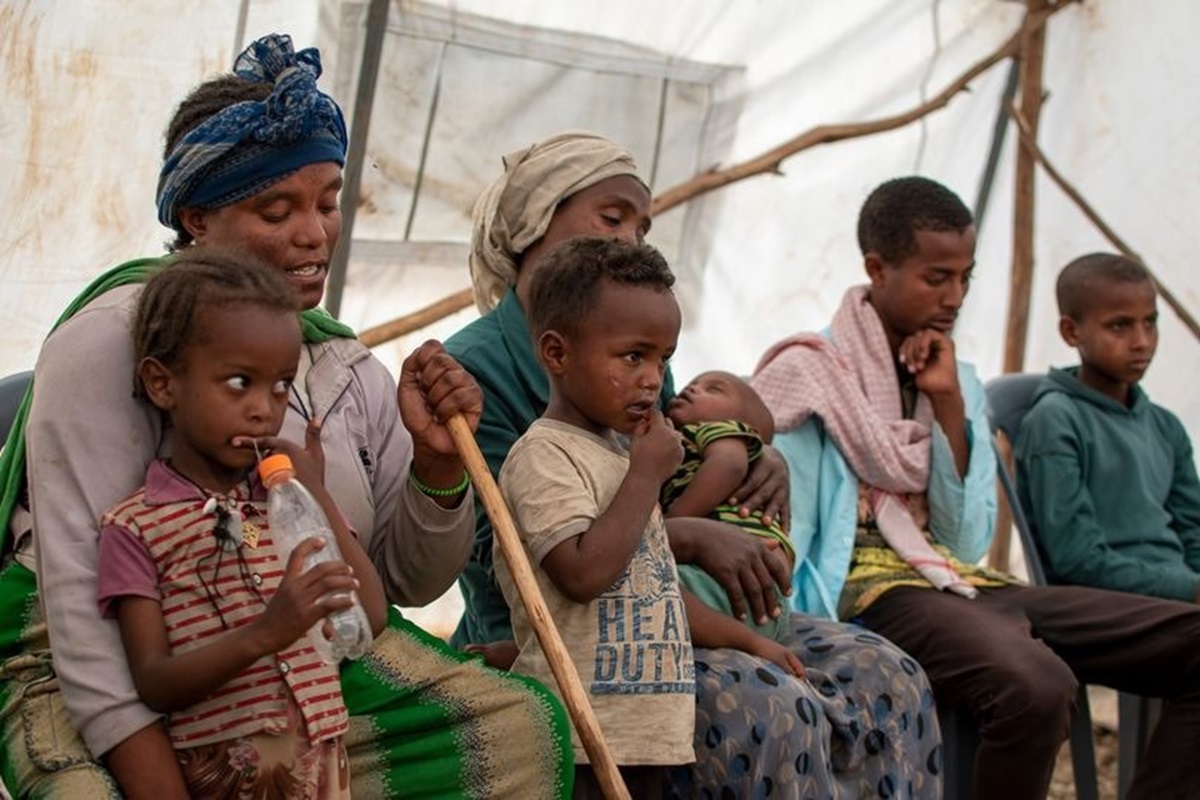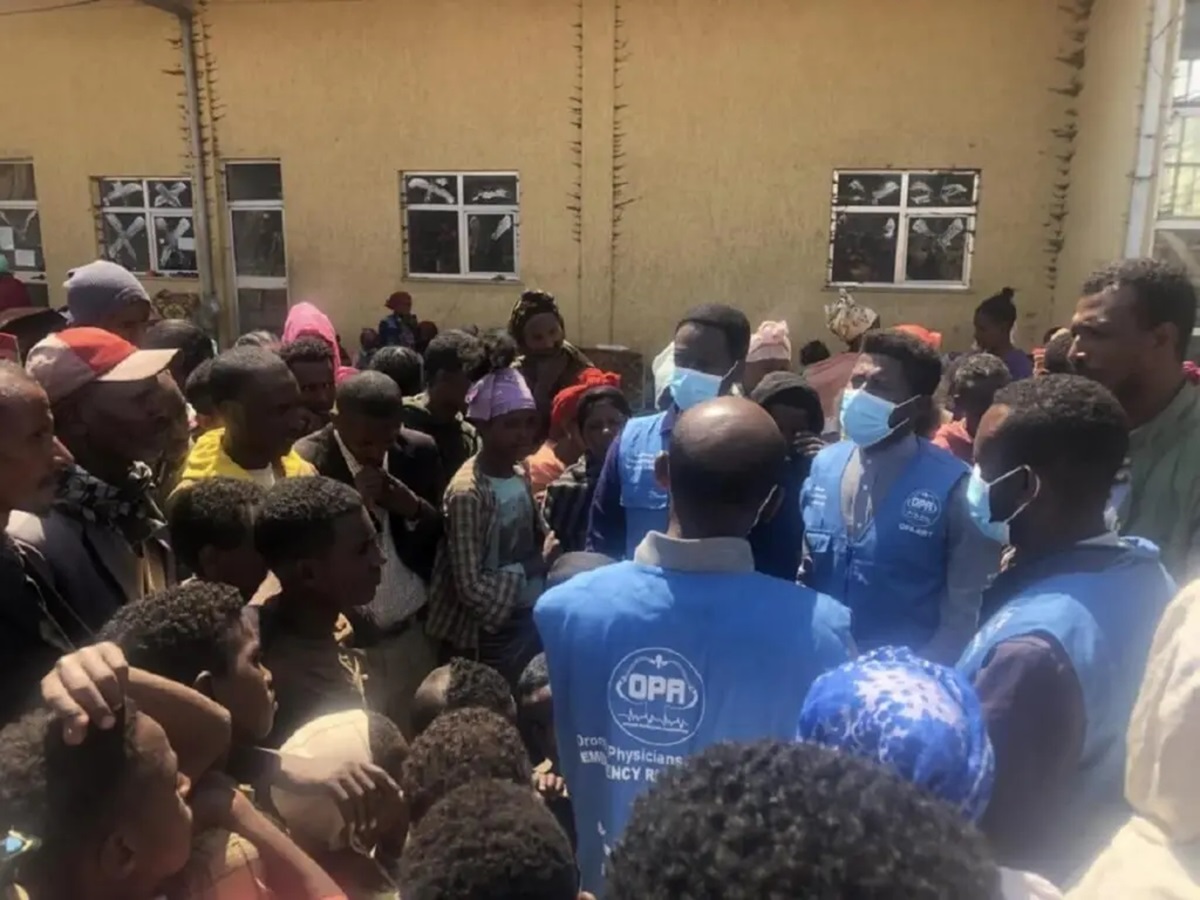Analysis: Oromia region struggling to curb worsening food crisis in drought hit East Bale Zone amid continued donation to battlefront

Photo: East Bale Zone Government Communication Bureau
By Dereje Gonfa @DerejeGonfa
Addis Abeba, December 1/2021 – Oromia region reported drought and death of thousands of cattle mainly in the Borana zone where people in several woredas in the zone suffered from severe food shortages resulting in death. The Bale zone, unlike Borana while suffering from drought, received an underwhelming response from the government in addressing the issue in the backdrop of continued donations to the battlefront. Residents of the East Bale zone spoke to Addis Standard about their conditions detailing the severity of the drought coupled with inflation, desert locust invasion and the mismanagement thereof. Meanwhile, the Oromia regional government has been indulging in donations to other regional states as well as to the Ethiopian National Defense Forces (ENDF).
Haji Aman Hussien, a resident in Sawena woreda, explained that pastoralist households are faced with shortage of food, “The drought has killed cattle and the remaining are weak, unable to move without human assistance.” Arbi Hussein, an elderly resident of Dawe Sarar woreda who has witnessed multiple dry seasons explained, “This drought is different because people are equally hungry as the cattle,” he added, “This coupled with the limited assistance that is only reaching a small number of individuals will not give us relief.”
Arbi Hussein, an elderly resident of Sawena woreda
“This drought is different because people are equally hungry as the cattle.”
The Oromia regional state recently donated over 3500 head of livestock to the military, according to the former head of office of Oromia Prosperity Party (OPP) in July. The East Bale Zone participated in donations to the ENDF, sending about 400 head of livestock while the women in the area prepared meals for the soldiers in August. Most recently Sawena, one of the woredas in the zone, posted on its government communication bureau facebook page claiming to have donated Eight million ETB to the ENDF adding the women in the woreda prepared 440,00 ETB worth of food stock, an information Addis Standard’s repeated attempts to verify from local officials were to no avail.
The East Bale zone also sent its young people to the front, where 600 youth joined the ENDF in September alone. Haji testified that the youth is resorting to joining the military, rather than dying of hunger, “The elderly, women and children are left behind. We do not have anywhere to go.”
The East Bale Zone participated in donations to the ENDF, sending about 400 head of livestock .
Revealing another sphere of the impact on the community, Sadam Usman, a resident of Beltu town in Laga Hidha woreda, explained “In addition to drought, there is a lack of security and good governance which is driving inflation. This inflation is worsening impact of the drought.” Sadam expressed disappointment at the little attention given to the crisis in East Bale which resulted in slowing down the assistance needed to ensure famine from occurring. He argued that the number of people facing hunger keeps on increasing.
Repeated invasions of desert locust added to the problem, according to residents, destroying the stock of crops. Residents also said that the desert locust is reappearing, further speaking of attempts to control the invasion destroying bee hives which is another source of income for many in the zone famous for producing honey.
Attempts to control locust invasion destroyed bee hives, another source of income for many in the zone which is famous for producing honey.
Haji said, “In the past when drought occurred, people resorted to beekeeping. We eat honey and we sell it. Now we don’t have that as well. Because the chemical sprayed for the desert locust killed the bees as well. ” As report indicates late December of last year chemicals were sprayed to contain the desert locust in Bale and East Bale zones.
Addis Standard made several attempts to reach the administrator of East Bale zone, Adam Qasim for who refused to comment unless contacted in person. However, Ahmed Hassan, the administrator of Dawe Sarar woreda, one of the affected woredas in the zone, told Addis Standard, “Due to shortage of fodder and shortage of water around 30,000 people are in need of immediate assistance.”
According to Ahmed Hassan, the shortage of rainfall created famine-like conditions in Dawe Qacha, Sawena, Rayitu and Gololcha woredas. Ahmed explained how the shortage of rain led to shortage of water and fodder, “Now both people and the cattle are suffering.” He also detailed efforts to save the lives of cattle by providing water and fodder.
“Due to shortage of fodder and shortage of water around 30,000 people are in need of immediate assistance.”
Ahmed Hassan, the administrator of Dawe Sarar woreda
According to Ahmed, a bidding process to provide water with trucks is underway. He added, “For a lasting solution we are planning to work on water projects.” The administrator of Dawe Sarar woreda insists that the regional government efforts will bear fruit. He said, “We are working to provide support focused on preventing death from hunger.”
On his part, Geremew Olika, the deputy commissioner of Oromia disaster prevention commission, told Addis Standard that more than 270,000 people are affected by the drought. He added “We are distributing 6807 Quintals of food to people and aiming to reach all affected people.” According to Geremew, more than Two million people need immediate assistance as the drought struck across East Bale, East and West Hararghe, both Guji zones, Borana and other areas.
” More than Two million people need immediate assistance as the drought struck across East Bale, East and West Hararghe, both Guji zones, Borana and other areas.”
Geremew Olika, deputy commissioner of Oromia disaster prevention commission
Civil societies and farmers unions remain worried despite promises by zonal and regional officials. Gemechis Hamdisha, co-ordinator of the farmers cooperative union at Sawena, said the scale of the crisis unfolding in Bale is huge and it requires urgent and large-scale assistance. He said, “The number of people facing food shortage is increasing periodically. There is no emergency relief support reaching here, we are anticipating the worst.”
According a report by the Food Security and Nutrition Working Group (FSNWG), which is co-chaired by the Intergovernmental Authority on Development (IGAD) and the Food and Agriculture Organization of the United Nations (FAO), “Vulnerable communities in the IGAD region continue to experience a complex mix of reinforcing shocks and stresses that are eroding their resilience to food and nutrition insecurity. As of October 2021, 26 million people were already facing high levels of food insecurity (IPC Phase 3+), the report said.
Addis Standard made several attempts to reach out to the head of Oromia communication bureau, Hailu Adugna who declined to comment saying, “We don’t consider Addis Standard as an independent media.” AS







